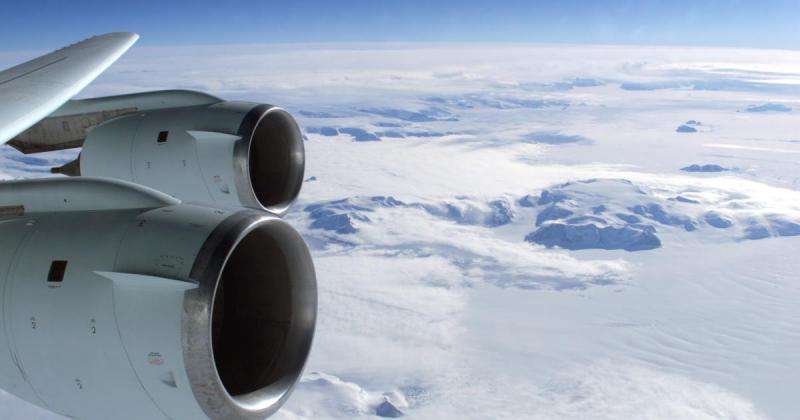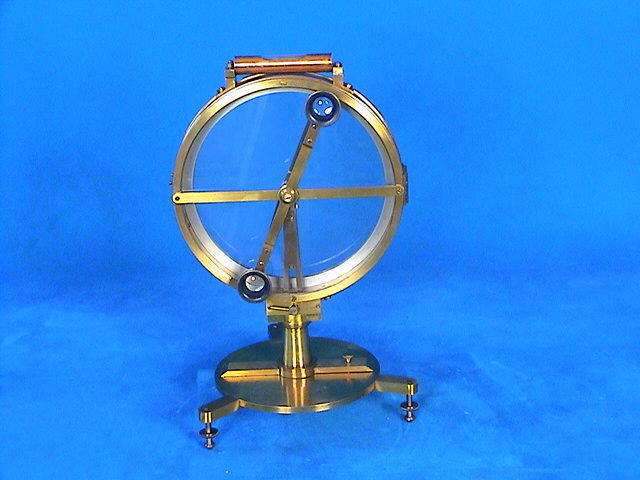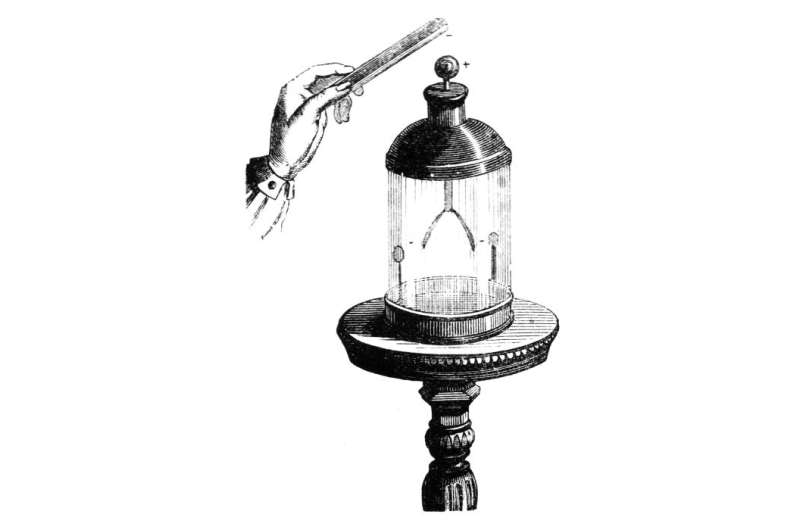Classroom Antarctica

Reaching the magnetic South Pole is a travel destination few people get to check off their bucket list. But two University of Melbourne PhD students did just that while also indulging their interest in classic physics experiments.
While most of the passengers on their flight over Antarctica were looking out the windows at the dazzling and untouched Antarctic landscape, Rory Spiers and Giaccomo Caria were more concerned with recreating Nobel-prize winning physics experiments high above the ice-caps.
'Classroom Antarctica' is an annual event organised by retired academic administrator David Dodd and sponsored by the Laby Foundation. It sends University of Melbourne students and physicists on a chartered Qantas jet fly-over of Antarctica, where they run demonstrations for high school students and the general public.
The University of Melbourne's Professor David Jamieson, Mr Spiers and Mr Caria led this year's trip. The students recreated several classic physics experiments using historic equipment borrowed from the School of Physics museum.
Mr Caria says the once-in-a-lifetime field trip wasn't about new discoveries, but about giving students a hands-on experience above one of the most remote locations on Earth.
"We wanted to show the passengers how scientists work and get them excited about science," he says. "We had all the students asking questions and just listening to our explaining about experiments, so I would say the goal was to really engage them."
One of the things the Earth's magnetic field does is to deflect dangerous radiation from the sun ('solar wind') and from other heavenly bodies (so-called 'cosmic radiation'). Without a magnetic field, the Earth's atmosphere would be stripped away by the solar wind, as has happened on Mars, which has no magnetic field and less than one per cent of the Earth's atmosphere.
Without the magnetic field, living organisms would be bombarded by dangerous ionising radiation, making it nearly impossible for complex life to survive.

Mr Caria used a muon counter to measure muon particles, which are produced by cosmic rays, and cosmic rays are very high energy particles which come from everywhere in the universe.
"We don't know a lot about cosmic rays, but if we study muons, we can find out about the cosmic rays," he says. "One of the experiments we did on the plane was first carried out more than 100 year ago, and it was actually the experiment that discovered cosmic rays."
Austrian-American physicist Victor Hess discovered cosmic rays in 1912 when he travelled several kilometres straight up in a hot-air balloon while measuring the background levels of ionising radiation.
He showed that the radiation increased dramatically as he rose, and thus much of the background radiation was coming from space, rather than from Earth. He was awarded the 1936 Nobel Prize in Physics for this discovery.
Hess used a device called a 'gold leaf electroscope', which is a gold leaf attached to a metal rod that is 'charged' with static electricity, using a glass rod that was rubbed on a cat's fur.
Because the gold leaf and the metal rod have the same charge, they repel one another, and so the gold leaf stands out at an angle. This static charge would remain, except ionizing radiation strips electrons from the gold atoms, and therefore allows electric charge to flow out of the gold leaf. Eventually, the background radiation causes the charge to be lost and the gold leaf falls flat. The time taken for this to occur is directly proportional to the amount of background radiation there is.
The scientists on-board Classroom Antarctica recreated this experiment using a gold leaf electroscope from the museum, and a cat fur that had been in the School of Physics since early last century. They also had a modern radiation detector on board to precisely measure background radiation.
Mr Caria says performing scientific experiments thousands of feet above Antarctica was an unexpected thrill.

"It was the first time I had done an experiment on a plane and it was really interesting," he says. "We only had a very small space available, so it was very challenging to coordinate all the work."
"The first part of the flight when we were travelling from Melbourne to Antarctica was very busy, but the second part of the flight was sightseeing and looking at the sights."
Mr Spiers thanked the Laby Foundation for sponsoring the 12-hour trip, saying it was a rare opportunity for high school students to talk to scientists and get to know what they do.
"It was an amazing opportunity to teach and to learn and to engage with the public about science, particularly physics," he says.
"All the electronics can be done with extremely cheap parts that students can buy and build themselves."
Mr Caria says it can be hard for kids to understand what is it that scientists do, so the Classroom Antarctica program is useful in allowing kids to be part of the physics experiments.
"I think it's good for them to see and have a first-hand experience. It really helps people who maybe have a passion for science but don't know where to go or what to do. It's good to give them ideas and hints."
Provided by University of Melbourne


















